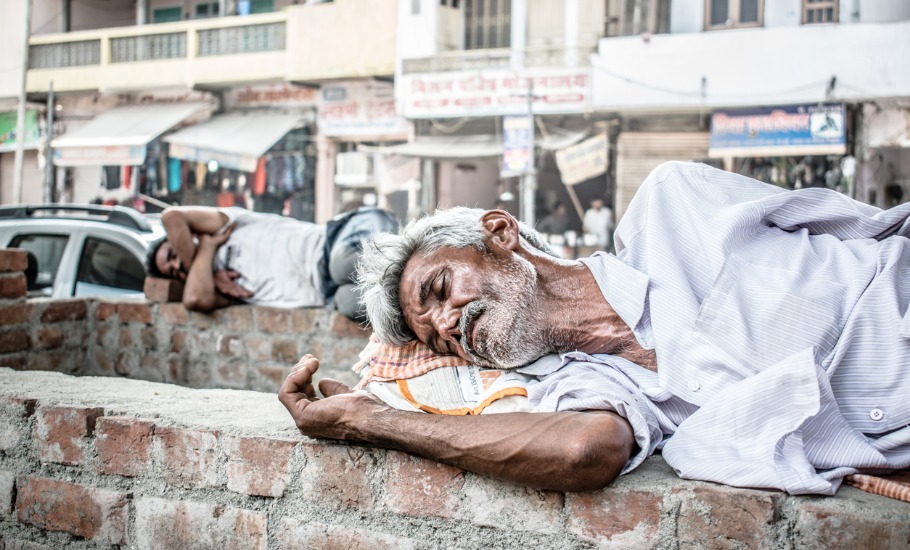
Two Indias: Top 20% turns 39% richer, bottom 20% turns 53% poorer
COVID led K-shaped recovery has widened chasm between rich and poor, says ICE360 Survey 2021; think-tank calls for K-shaped policy

“COVID spared none,” goes the widely prevalent thought. Yet, a study of the exact financial terms in which the pandemic hit the rich and poor in the country takes one back to the ‘Two Indias’ conundrum. The top and bottom of the pyramid absorbed the pandemic shock in vastly different ways.
The top 20% of the population in terms of annual household income did not just escape a financial blow from the pandemic. It, in fact, saw its income grow 39% in the pandemic year, according to the ICE360 Survey 2021, conducted by Mumbai-based think-tank People’s Research on India’s Consumer Economy (PRICE). The bottom 20%, on the other hand, saw its income plunging 53%, it said.
Webinar: Is Omicron changing the character of coronavirus?
What makes the trend ‘unprecedented’, the study noted, is the fact that the poorest 20% of Indian households had been seeing their annual income rise constantly since 1995 — the period of economic liberalisation. What was essentially an upward graph — albeit wobbly — was torn asunder by the pandemic, leading to a K-shaped recovery of the Indian economy post COVID.
A ‘K-shaped recovery’ occurs when, after a recession, all parts of the economy do not recover at the same pace. The ‘two-speed’ recovery sees non-uniform growth, varying in terms of rates, time frames or magnitudes. What is desired is uniform recovery that buoys the economy across classes, regions and sectors.
Five parts of the pyramid
The PRICE survey was conducted in April-October 2021 across two rounds, covering 2 lakh households in the first round and 42,000 in the second. The survey samples were taken from 120 towns and 800 villages across 100 districts nationwide. The population was divided into five segments, and data on household incomes from 1995 onwards were collected.
The study, as cited by an Indian Express report, found that the first quintile — comprising India’s poorest 20% — saw the greatest erosion of 53% from 2015-16 levels during the pandemic year. This means they earned less than half as much as what they did in 2016. The second quintile (lower middle-class) also saw its household income declining, though by a somewhat better 32%. For the third quintile (middle income), the quantum of erosion was just 9%. What was particularly worrisome was that these segments had seen their incomes rise uninterrupted since 1995, said the survey.
Also read: FDI flows to India slip 26% in 2021 as 2020 M&A deals not repeated
The fourth and fifth quintiles — upper middle and richest — actually saw their household incomes grow in 2020-21, by 7% and 39%, respectively, from 2015-16 levels. In the period between 2015-16 and 2020-21, India’s richest added more income than in any of the five-year periods since 1995, said the survey.
What lays the blame squarely on the pandemic is that between 2005 and 2016, the poorest 20% had seen their income surge 183%, vis-à-vis 34% by the richest 20%. The reversal of fortunes is among the stark — but less spoken about — impacts of COVID and the economic disruption it brought in its wake.
Urban vs rural poor
While the rural poor suffered, too, the magnitude of impact was greater on the urban poor, said the PRICE study. This could be because the stringent lockdown imposed during the first wave of COVID had brought urban economic activity to a complete standstill. Several workers, particularly immigrants, had lost their jobs, while petty traders were forced to close shop.
The study also noted the rising share of urban centres in the poverty chart. While 10% of the poorest one-fifth of India lived in urban areas in 2016, the figure rose to 30% in 2021.
To address the consequences of the K-shaped recovery, PRICE recommends a K-shaped policy in the upcoming Budget. The Centre has to come up with schemes specifically to help the poor recover faster, it said.


